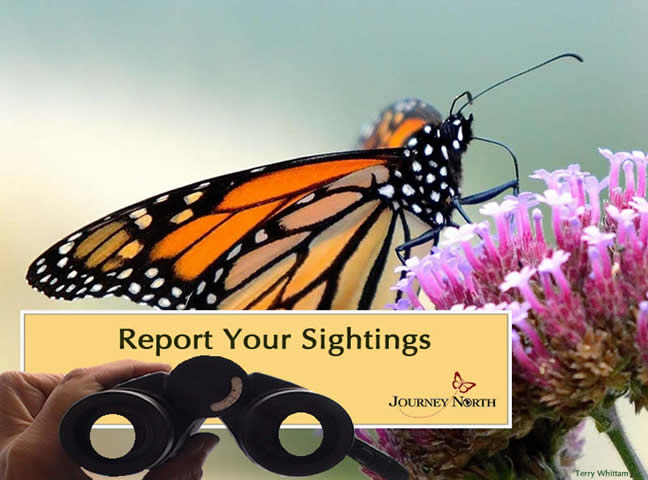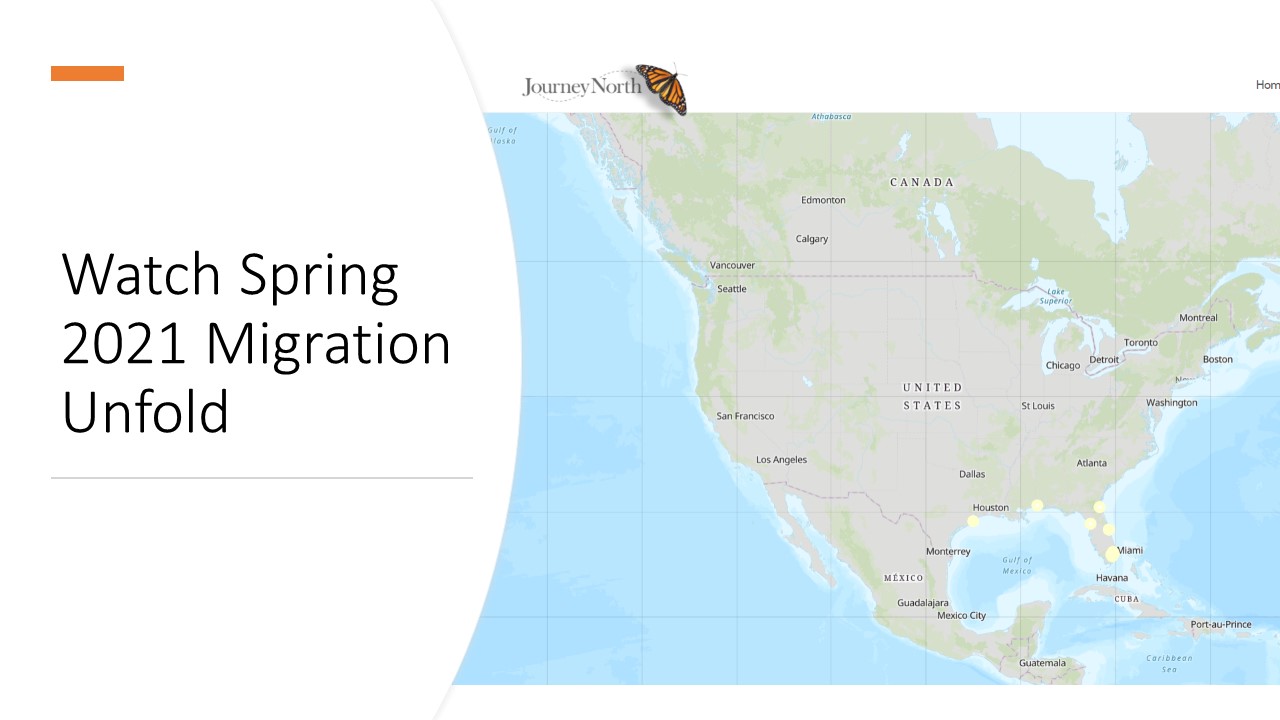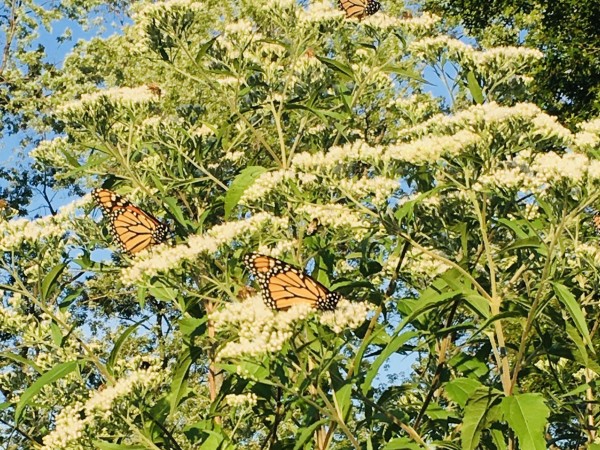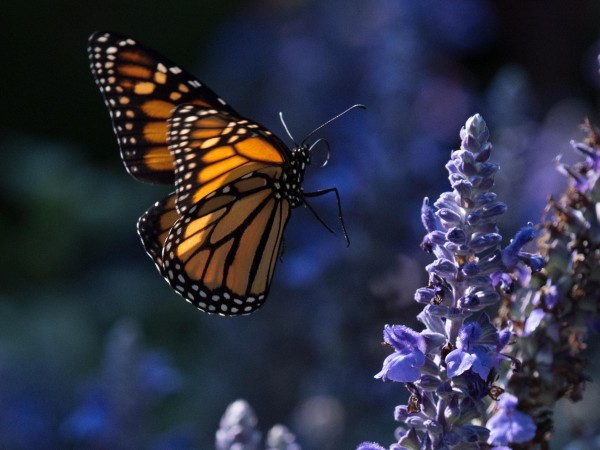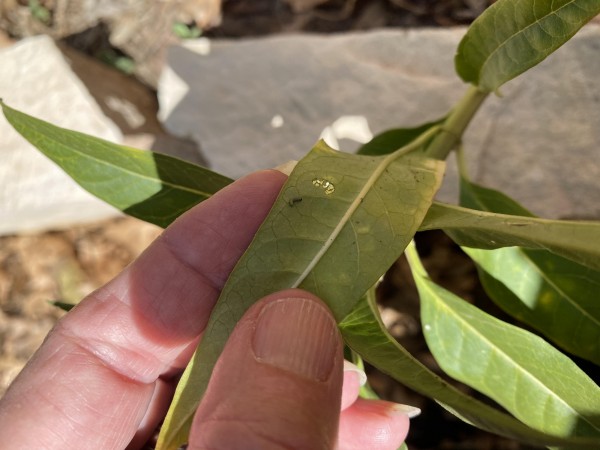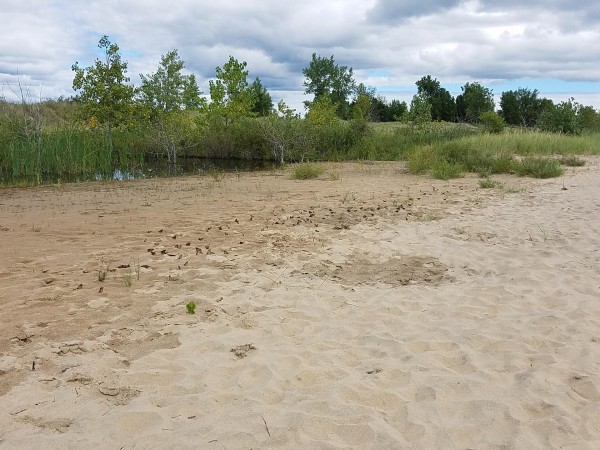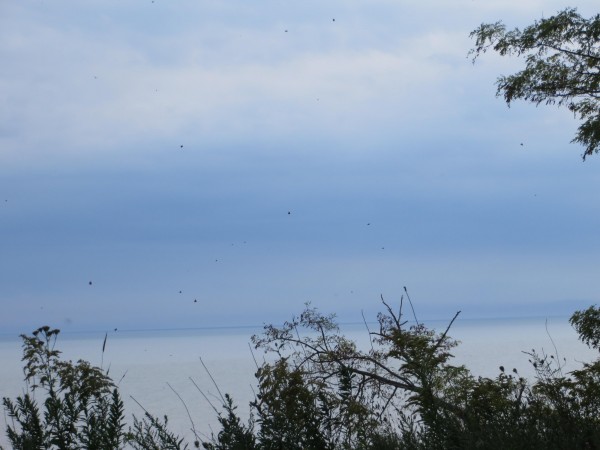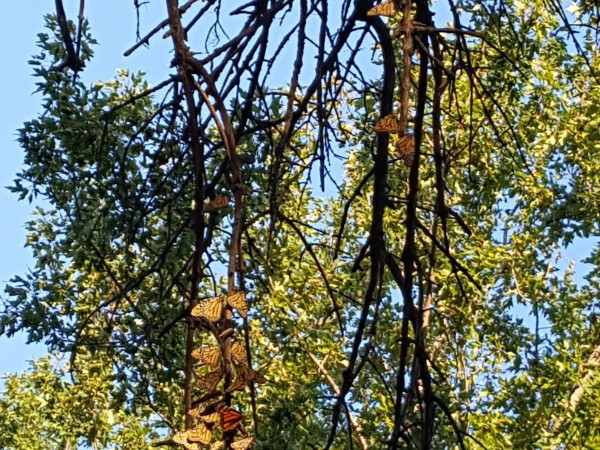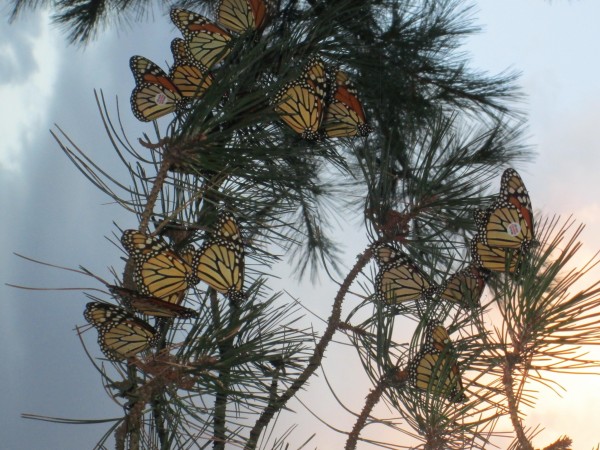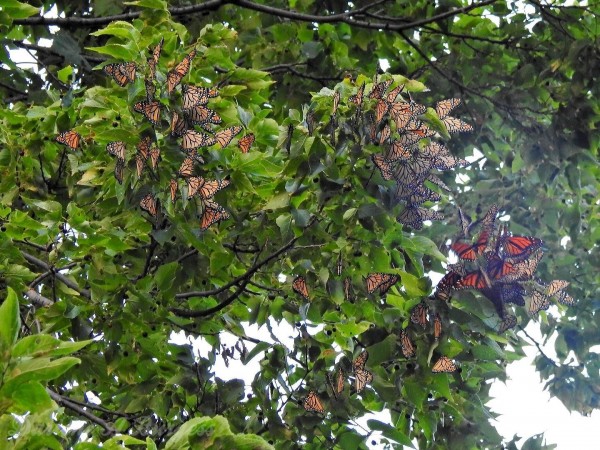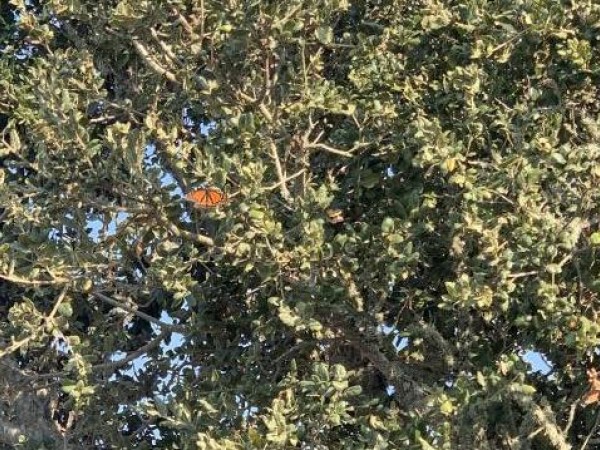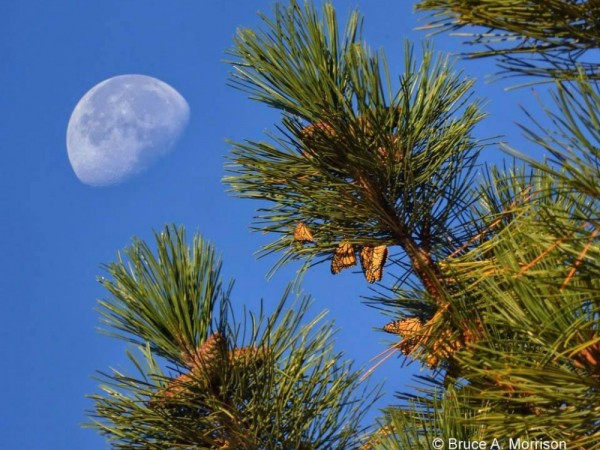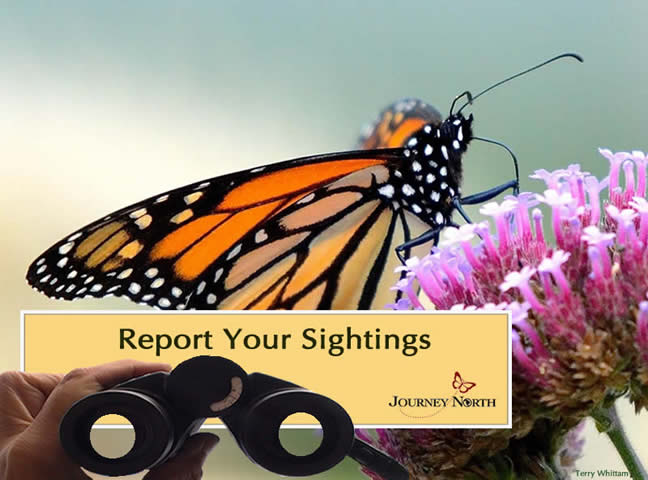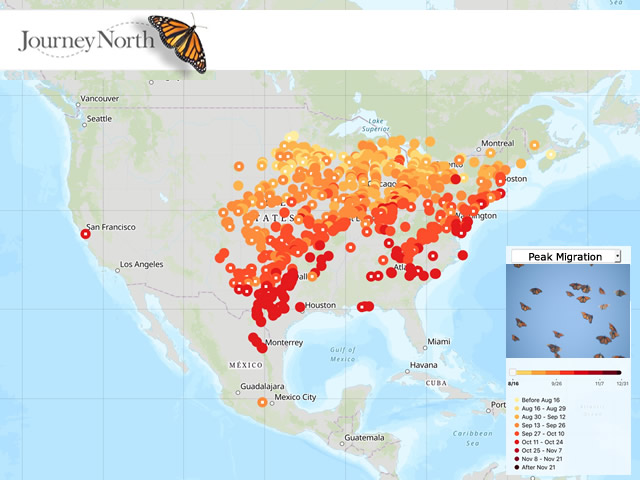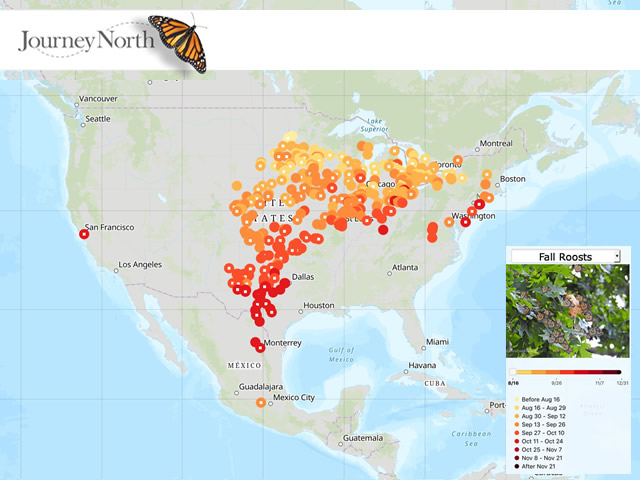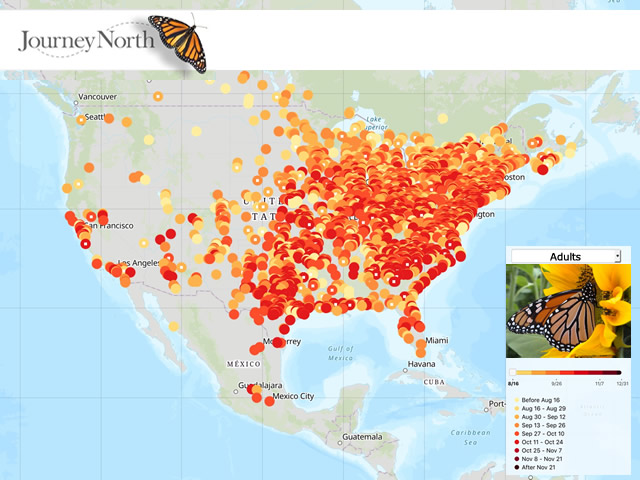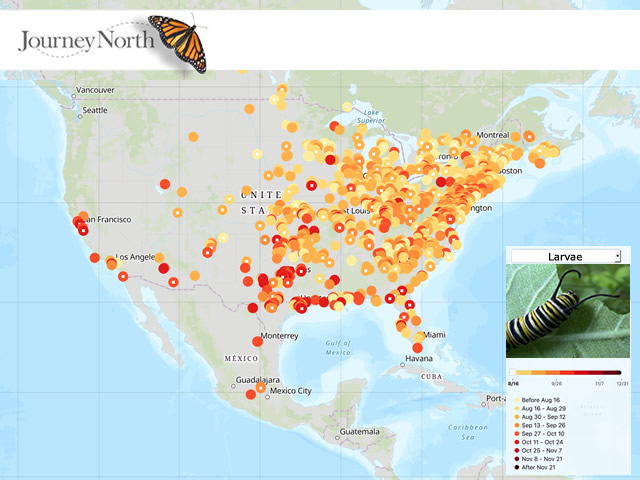On the Nectar Trail
Eastern Monarch Population
Packing on the Calories
Monarchs are gearing up for a long journey. During migration, monarchs must find the food they need to fuel their flight - and also to build the lipid reserves they’ll need for overwintering. The butterflies eat little to nothing during their 5-month stay in Mexico.
Erna in Cleveland, OH: "6:50 pm, warm, light wind. I saw 7 Monarchs that were feeding on boneset at once. The three of them are in the photo. One more Monarch was feeding on boneset in another place. Both boneset plants were under bright sun lightning." (09/03/2020)
Steve in Wichita, KS: "Many Monarchs in town, and a large number were seen (and photographed) at Botanica, our Botanical Garden. They were all about the same time....9 to 11am this morning, and they weren't traveling.....they were all on flowers feeding." (09/05/2020)
Eggs and Larvae
Reports of eggs and larvae are still coming in, especially further south in the US.
Naomi in Chandler, OK: "They are going through the milkweed so fast I was afraid there would not be enough groceries for them. I picked up another variety of milkweed at the nursery and they are slowly moving onto those plants. Hoping to be able to find where they form their chrysalis so we can watch them mature, hatch and take to the air." (09/01/2020)
Jean in Abilene, TX: "I saw my first eggs 2 days ago, today I found 9 larvae. They are finally here!" (09/07/2020)
Peak Migration
Journey North citizen scientists continue to report directional flying. Others are actively measuring peaks in migrating monarchs.
Valerie in East Tawas, MI: "Monarchs were flooding in past us and over us as we drove in to the park around noon. We didn't see the sheer numbers we saw in 2018, but it was still very busy with butterfly activity over the two+ hours we were there." (08/31/2020)
Kathleen in Youngstown, NY: "In 20 minutes I counted 191 flying in a straight line directly over my head towards shore, so I can only imagine how many more were actually out there going past all around us! So beautiful and exciting! By 7:00 p.m. they had stopped going by." (09/01/2020)
Aniko in Central Elgin, ON: "We saw hundreds of Monarchs in large, continuous flocks fly past us along the bluffs on the north shore of Lake Erie just west of Port Stanley. This went on for a couple of hours in the late afternoon, by evening there were only a few stragglers to be seen. Not roosting in the trees around us tonight. A beautiful sight!" (09/08/2020)
Uptick in Roosts
Since last week's update, new reports of monarch roosts are coming in fast and furious. Check out the Monarch Fall Roost map to see the location of these roosts. As mentioned before, roosts are challenging to study and we still have much to learn about them. That’s why it's so important to submit your monarch roost reports to Journey North. Roosts show us where large concentrations of migrating monarchs are found and reveal the main migration pathways to Mexico.
Sarah in Blue Earth, MN: "This has been an exciting week! Last night again there were roosts, I counted 250 butterflies. Tonight I counted 325." (09/05/2020)
Aimee in Graytown, OH: "About 200 monarchs/day have been frequenting 4 acre wooded and pollinator friendly property and roosting in white pine and poplar trees. They have been on the property for the past 4-5 days. This evening we tagged 100 of them and estimate another 100 in visible areas that could not be reached by ladder. Temps low 70s, partly cloudy." (09/05/2020)
Darlene in Point Pelee National Park, ON: "Monarchs at the Tip before 7:50 pm sunset at Point Pelee National Park. Five main areas; 19 separate roosts with largest of about 100. All clusters were on west side of trees. Seen at Tip shuttle stop, over west path and seen from west path looking east into interior trees of Hackberry and Mulberry, and about 50 in Hackberry tree at front gate." (09/08/2020)
Western Monarch Population
Wild Weather Ahead!
Many Western cities and towns have reported scorching record high temperatures this summer with some areas even tipping the scales as one of the hottest summers on record. Adding to this challenge are the wildfires raging in several states including California. Now after a sizzling Labor Day weekend and record heat in some locations reaching well above 100 degrees, a rare extreme weather phenomenon is barreling through the West bringing hurricane strength winds to Utah and the earliest first snow in years to the northern reaches of the West in early September. With the monarch migration in process, we need your eyes to alert everyone about what you are seeing where you live.
Read more of Gail Morris' Western Monarch Fall Report #2...
Keep Reporting
When submitting monarch ROOST data to Journey North, please include the following information in your comments:
- Date the roost first formed
- Nectar sources nearby like clover, alfalfa fields or wildflowers
- Overnight temperatures
- Wind direction. Were the monarchs shielded from the wind in this location?
- Tree species monarchs were roosting on
- How you counted or estimated the number of adults roosting
For PEAK migration observations, please include the following information in your comments:
- How you counted or estimated the number of adults in flight
- Length of observation period
- Monarch activity observed (Were the monarchs in directional flight? Nectaring?)
Fall Monarch Migration 2020
Please report all monarchs you see: Adults, Eggs & Larvae, Overnight Roosts, Peak Migration Events


